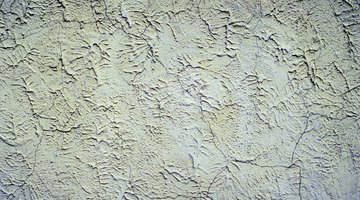Maintaining the pristine condition of your home’s exterior is crucial, and stucco plays a vital role in this endeavor. However, even the most durable stucco can develop hairline cracks over time, marring its aesthetic appeal and potentially compromising its protective barrier. If you find yourself in this situation, don’t despair! Repairing hairline cracks in stucco is a relatively straightforward task that you can undertake with the right materials, knowledge, and technique.

Image: waypointinspection.com
In this comprehensive guide, we will delve into the intricacies of stucco repair, empowering you with the necessary information to restore your stucco’s integrity and enhance your home’s curb appeal. Whether you’re a seasoned DIY enthusiast or a first-time homeowner, we’ve got you covered. Read on and discover the step-by-step process for fixing hairline cracks in stucco, transforming your home’s exterior from cracked and weathered to sleek and flawless.
Identifying Hairline Cracks: The First Step to Restoration
Before embarking on the repair process, it’s essential to understand the different types of cracks that can occur in stucco. Hairline cracks, as their name suggests, are fine, narrow fissures that do not exceed 1/16 of an inch in width. These cracks typically arise due to minor shifts in the underlying substrate or exposure to extreme weather conditions. While hairline cracks may not pose a significant structural threat, they can compromise the stucco’s protective abilities and allow moisture to penetrate, leading to more severe damage in the future.
Distinguishing hairline cracks from more serious structural cracks is paramount. Structural cracks are wider than 1/16 of an inch and often indicate deeper problems within the underlying structure. If you encounter structural cracks, it’s highly recommended to consult a professional for proper evaluation and repair.
Gathering Your Arsenal: Essential Tools and Materials
To successfully repair hairline cracks in stucco, you will need to gather a few essential tools and materials:
• Stiff-bristled brush or broom
• Wire brush (optional)
• Trowel or putty knife
• Caulk gun
• Stucco patch or patching compound
• Primer (optional)
• Paint (optional, if desired)
Preparing the Canvas: Surface Preparation for Optimal Adhesion
Prior to applying any repairs, it’s crucial to prepare the affected area by thoroughly cleaning the surface. Remove any dirt, dust, or debris with a stiff-bristled brush or broom. For stubborn dirt or grime, you can use a wire brush to gently scrub the surface.
Once the surface is clean, widen the crack slightly using a trowel or putty knife. This will create a small groove that will allow the patch or patching compound to adhere more effectively. If the crack is very thin, you can skip this step.

Image: homesteady.com
Applying the Patch: Filling the Void with Precision
Now comes the moment to fill the hairline crack with stucco patch or patching compound. Load a caulk gun with your chosen repair material and apply it directly into the crack, ensuring complete coverage. Use the trowel or putty knife to smooth out the patch, feathering the edges for a seamless blend with the surrounding stucco.
Allow the patch to dry completely according to the manufacturer’s instructions. This drying time may vary depending on the type of repair material used and the ambient temperature.
Priming and Painting: Enhancing Durability and Aesthetics
After the patch has dried, you can enhance its durability and overall appearance by applying a primer to the repaired area. Primer helps to seal the patch, preventing water проникновение and improving the adhesion of paint if desired.
Once the primer has dried, you can paint the repaired area to match the surrounding stucco color. This step is optional, but it will make the repair less noticeable and restore the stucco’s original aesthetic appeal.
How To Fix Hairline Cracks In Stucco
Conclusion: A Renewed Stucco, a Rejuvenated Home
Repairing hairline cracks in stucco is a fairly straightforward task that can be accomplished with the right tools and materials. By following the steps outlined in this guide, you can restore your stucco’s integrity, protect your home from moisture damage, and enhance its visual appeal.
Remember, regular inspection and maintenance are key to preserving the longevity of your stucco. By addressing hairline cracks promptly, you can prevent minor issues from escalating into costly problems down the road, ensuring your home remains a source of pride and comfort for years to come.







